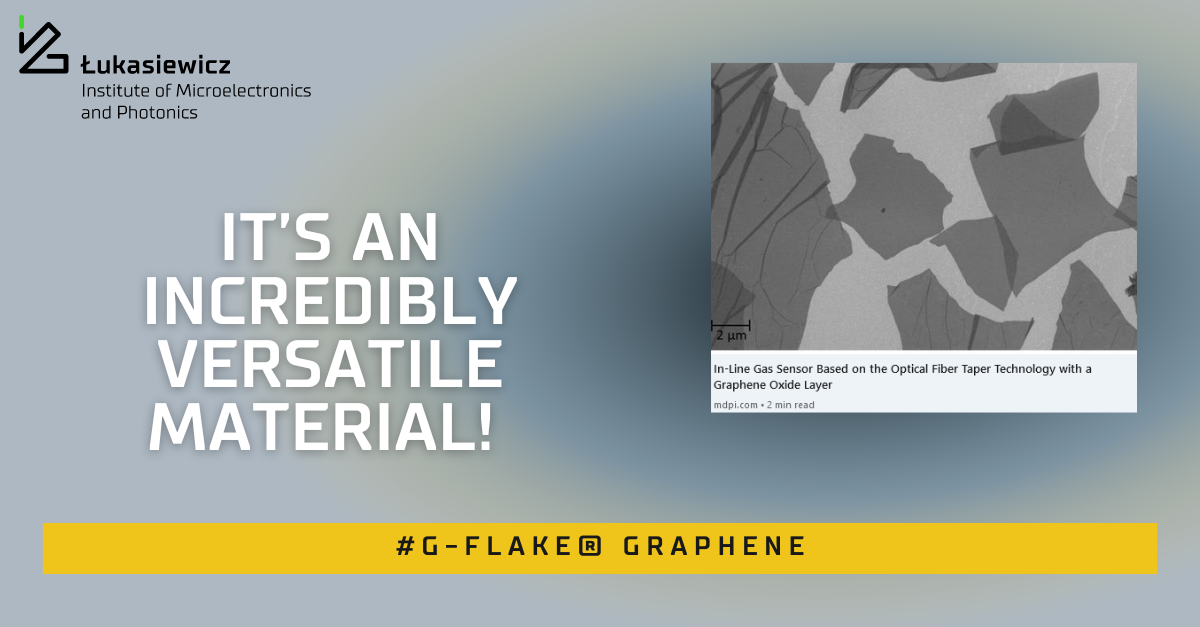Oh, what graphene can make! Our flake graphene G-Flake® has already played the first fiddle in anti-corrosion varnish, reinforced with carbon fiber turned out to be much less sensitive to temperature changes, and recently has become a component of gas sensors such as: pure argon, hydrogen and propane-butane mixture. It’s an incredibly versatile material!
Hybrid sensors that can detect gas within 5 minutes were born in the WAT laboratories. What was our contribution to their development? Our researchers (including Krystian Kowiorski, PhD) have donated graphene and their know-how to the above-mentioned university. Thanks to this, gas sensors where the front of the optical fiber was covered with graphene oxide G-Flake® were created. You can find more on this subject in the publication in “Electronics”, along with the following information:
– we have examined the change of light in a double-coated optical fiber in a wide optical range
– measurements were carried out in the light wavelength range of 500 nm-1800 nm
– we have searched for such wavelengths for which there is a relation between the wavelength of light and gas absorption. The results obtained for pure gases showed the greatest changes for the visible light range of 750 nm-850 nm, and for propane-butane the changes were visible in the entire tested range.
Thank you for your cooperation dr Karol Stasiewicz from MUT (WAT)!


